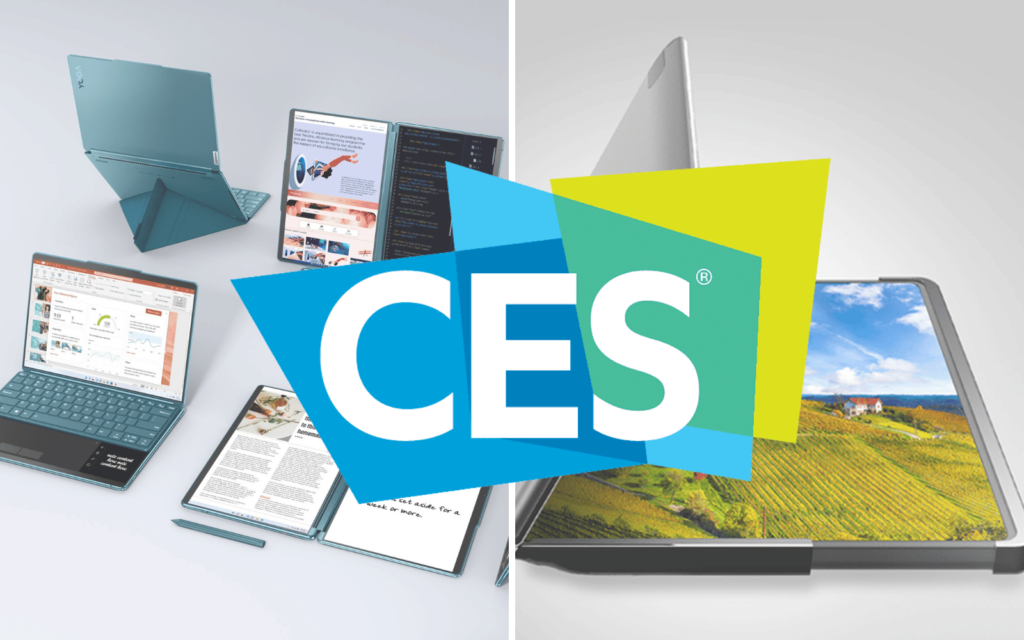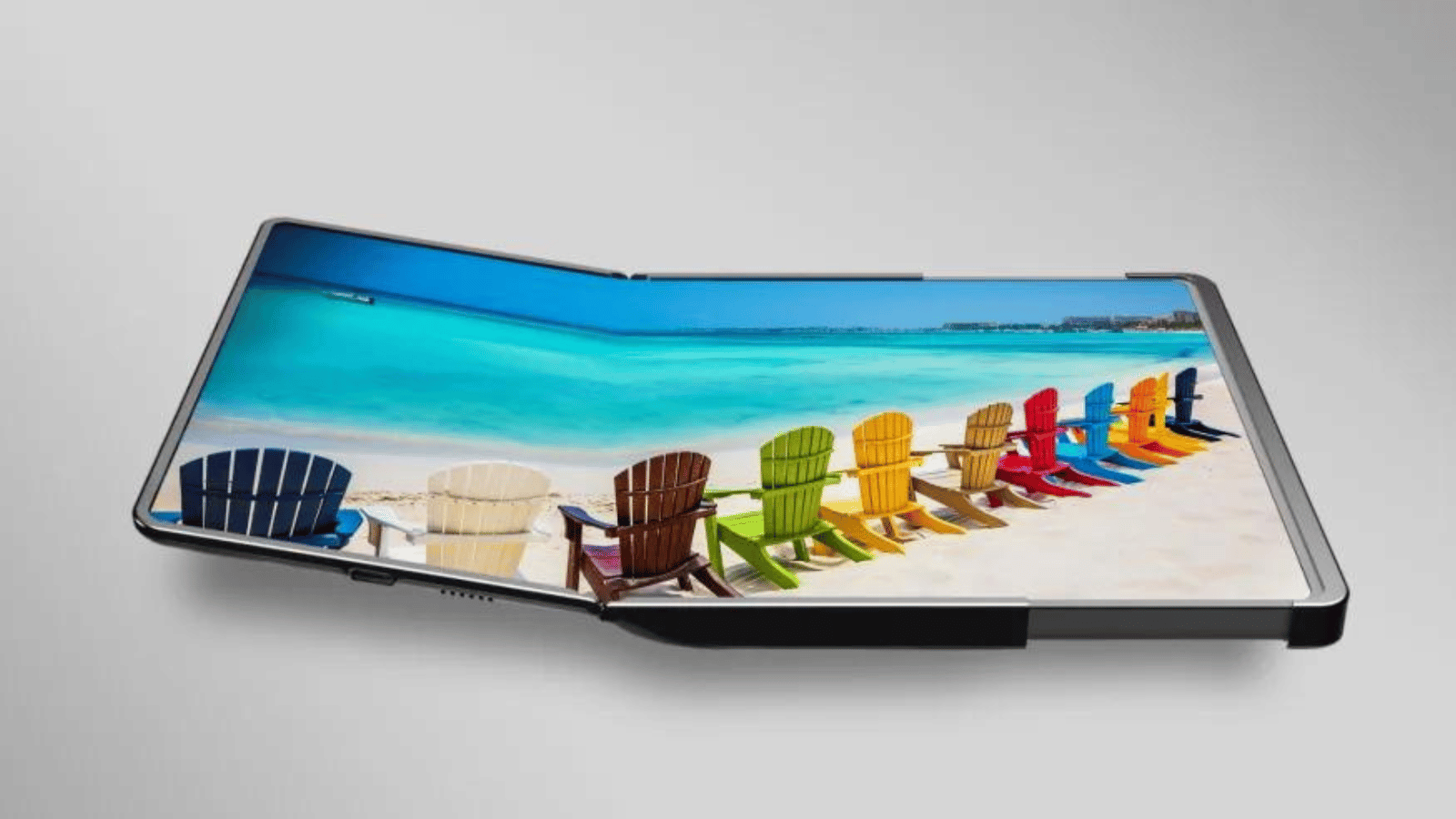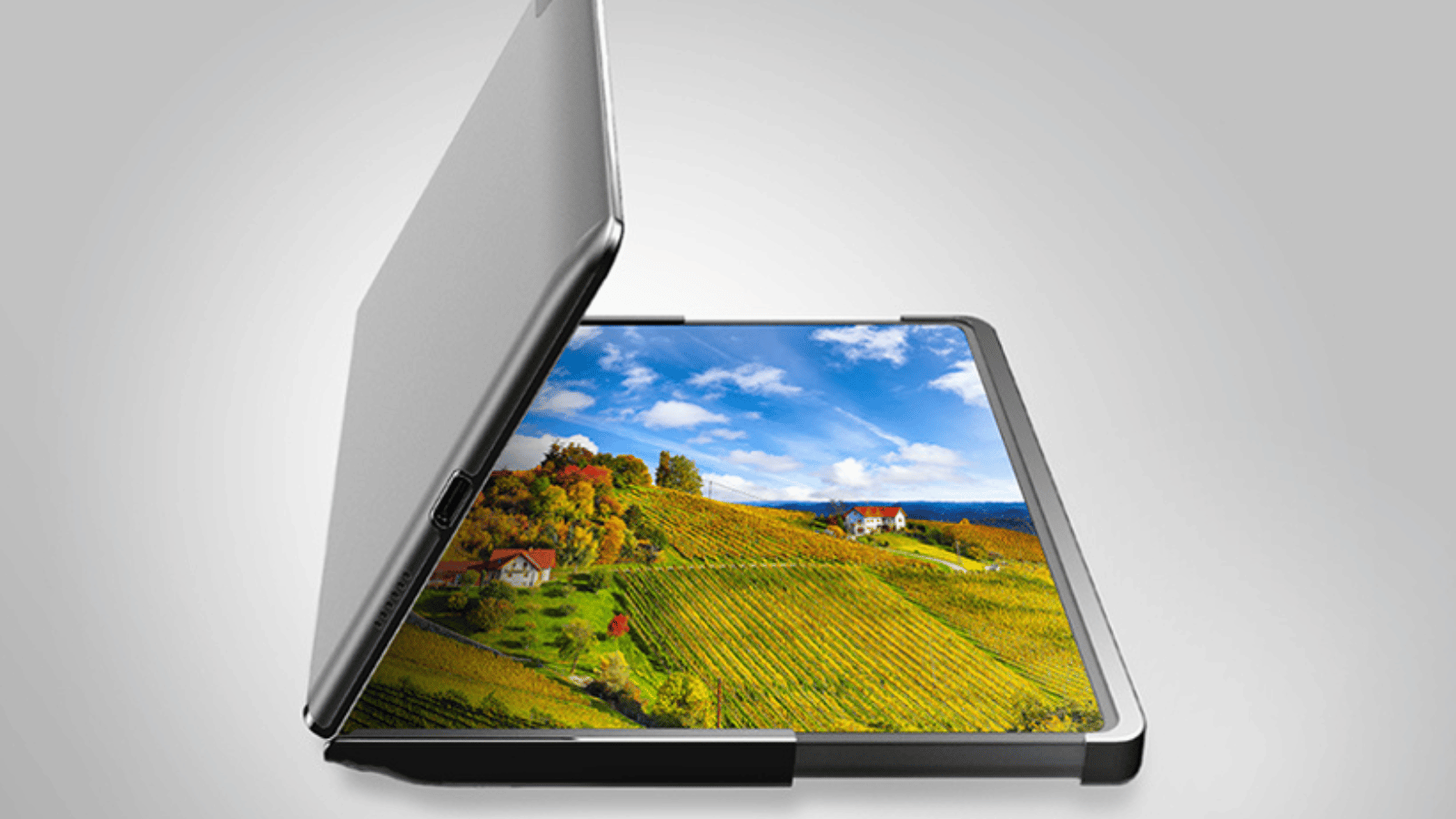CES 2023 is officially upon us. Well, not us specifically. South Africans have been sentenced to watch from afar, awaiting every new announcement as it happens. Still, it isn’t the event that matters. It’s the tech. And you best believe there’s some cool stuff to see.
CES kicked off last night for the masses, though some of the bigger names revealed their announcements to the media prior to the doors opening. Names like Samsung and LG revealed a plethora of new screens to hypnotise us with – and Sony told the world that the PS5 shortage was over. There’s even a Sony car on the way. No, we’re not joking. But we’ll get to that.
(Almost) Wireless
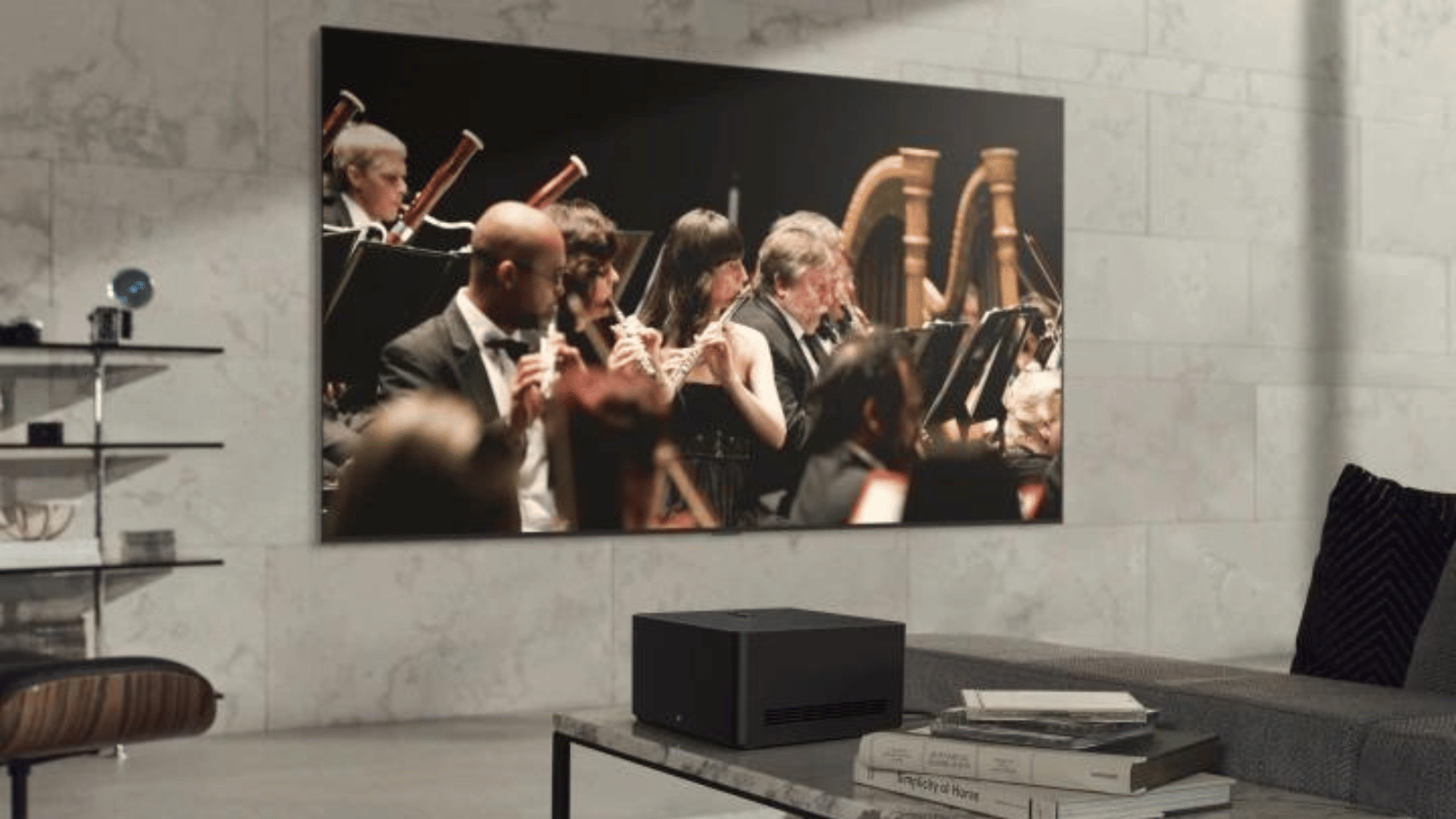
As ever, TVs are huge at CES 2023. Every company at the event wants to sell you the best of the best. Obviously. Except in LG’s case, it’s actually true. There was a slew of LG TVs announced during its presentation, including a 97in (almost) “wireless” LG Signature OLED M3. There was also an announcement of the C2 OLED’s successor, known as the LG C3 OLED (surprise, surprise). Throw in the new G3 and Z3 models, and you’ve got a successful CES presentation. But we’re focusing on that (almost) wireless TV.
Let’s get this out of the way. The LG Signature OLED M3 still needs a power cord. And at 97in it’s absolutely massive. The ‘wireless’ part comes in when you’re actually using the TV. It manages to feature 4K quality, with nothing other than the power cord plugged in (which hides inside the stand). It uses a transmitter that can be placed up to nine metres away. That’s where you’ll find the usual HDMI ports and such. LG’s transmitted is supposed to be capable of streaming 4K 120Hz video without any hassles.
Fortunately, you won’t need a bigger house to fit the 97in model in. LG plans to offer both 83 and 77in models too. LG says pricing will be announced later in the year, along with the rest of the lineup. It’s not going to be cheap.
TV on the Radio Wall
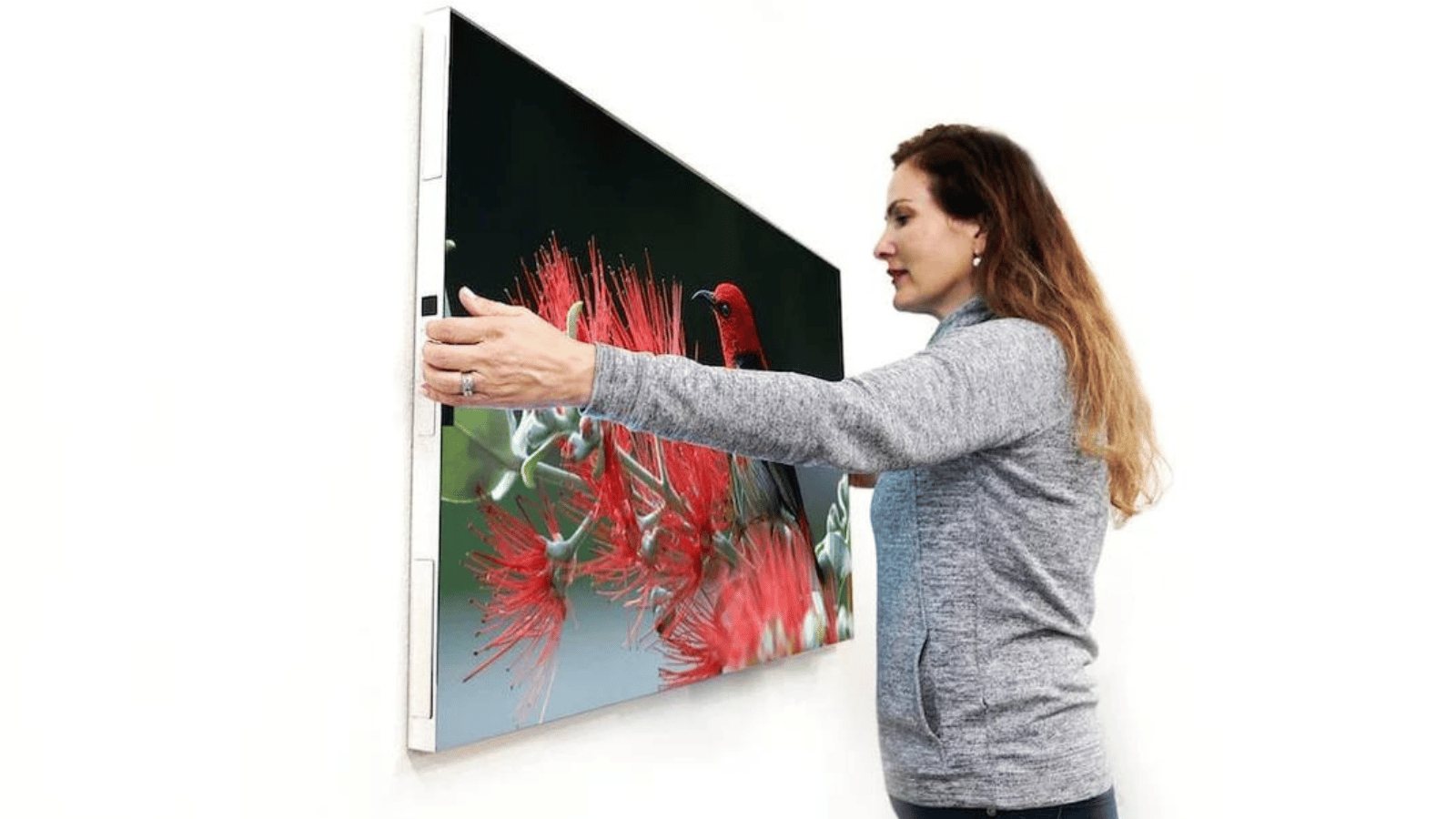
If you’re looking for a ‘true’ wireless TV, then feast your eyes on Displace’s completely wireless 55in OLED TV. “But how?”, you ask? The simple answer is batteries. Massive ones. They pop right into the side of the TV and (apparently) last for six hours at a time before needing to be hot-swapped. That’s… not great. But it’s a gimmick and not the only one that Displace has pioneered.
You see, Displace’s 55in OLED isn’t just wireless. It’s mountless too. It can stick to almost any wall (or window) that you want it to. It does this using multiple vacuum loops on its rear, letting its owner move it around a room, quickly and simply. Whether it actually works… remains to be seen. Do we think it’s the end of cables and mounts forever? Probably not. For now, there are only 100 available to actually buy. It could be a while before we see one out in the wild.
Throwing up in 8K
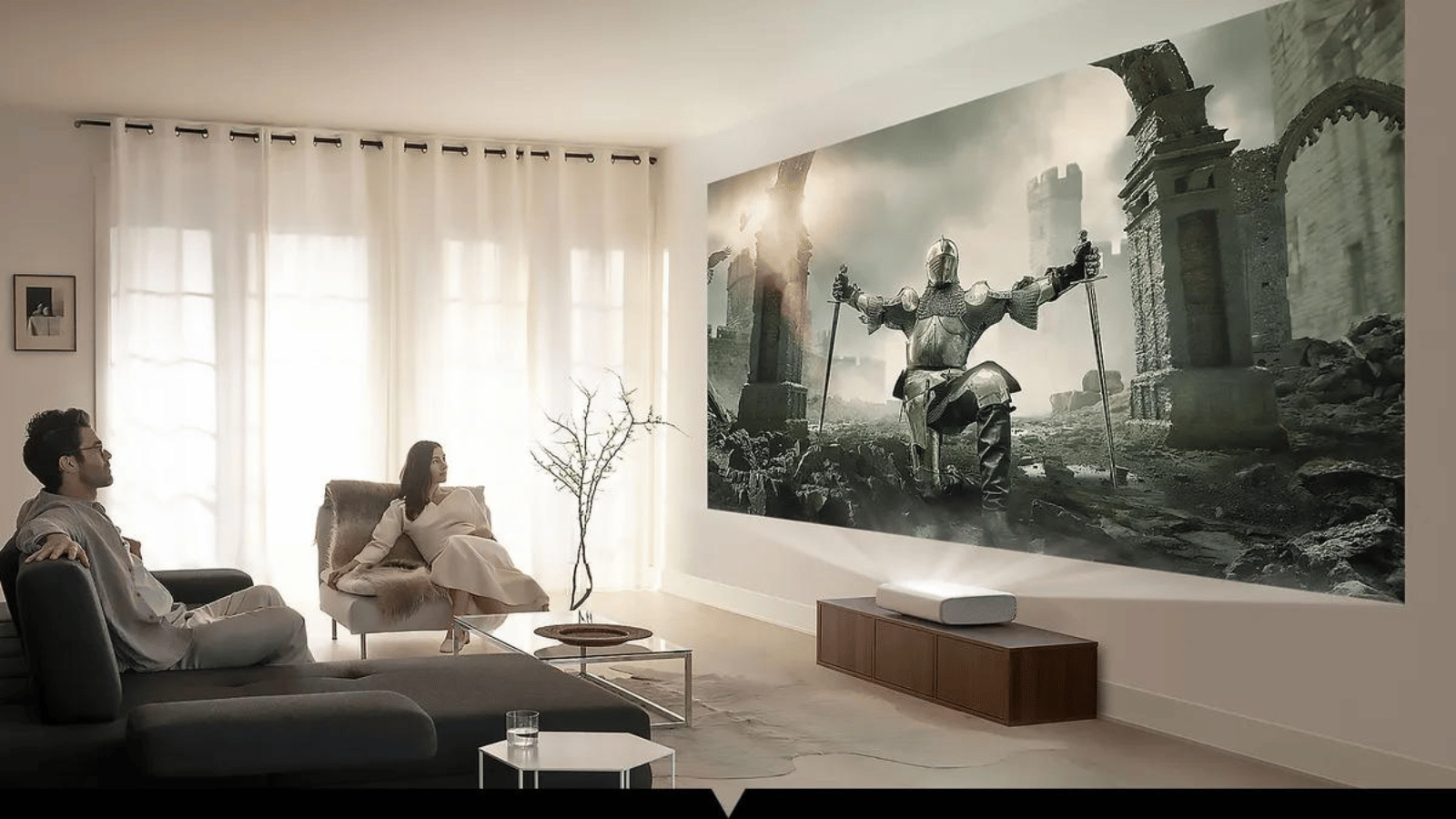
Samsung has had a busy CES so far. What with its own range of TVs, flexing tablets and more, we singled out the Samsung Premiere – an ultra-short throw projector capable of turning your wall into an 8K, 150in landscape. Whether you have enough space doesn’t matter. What matters is that Samsung could do it – and did.
If you aren’t familiar, a short-throw projector is one that can be placed directly in front of the wall, rather than all the way behind you.
Little is known about the Premiere just yet. We know it has built-in speakers and Dolby Atmos, as well as baked-in smart functionality to stream Netflix, Disney+, etc. That’s about it for confirmed features. Based on the 2020 Premiere model, however, we can assume that it’ll be laser-lit and brighter than its older sibling. Pricing and availability news is still scarce, though we can guess that it won’t be cheap, or come to South Africa at launch (or ever).
Dual-wielding laptops
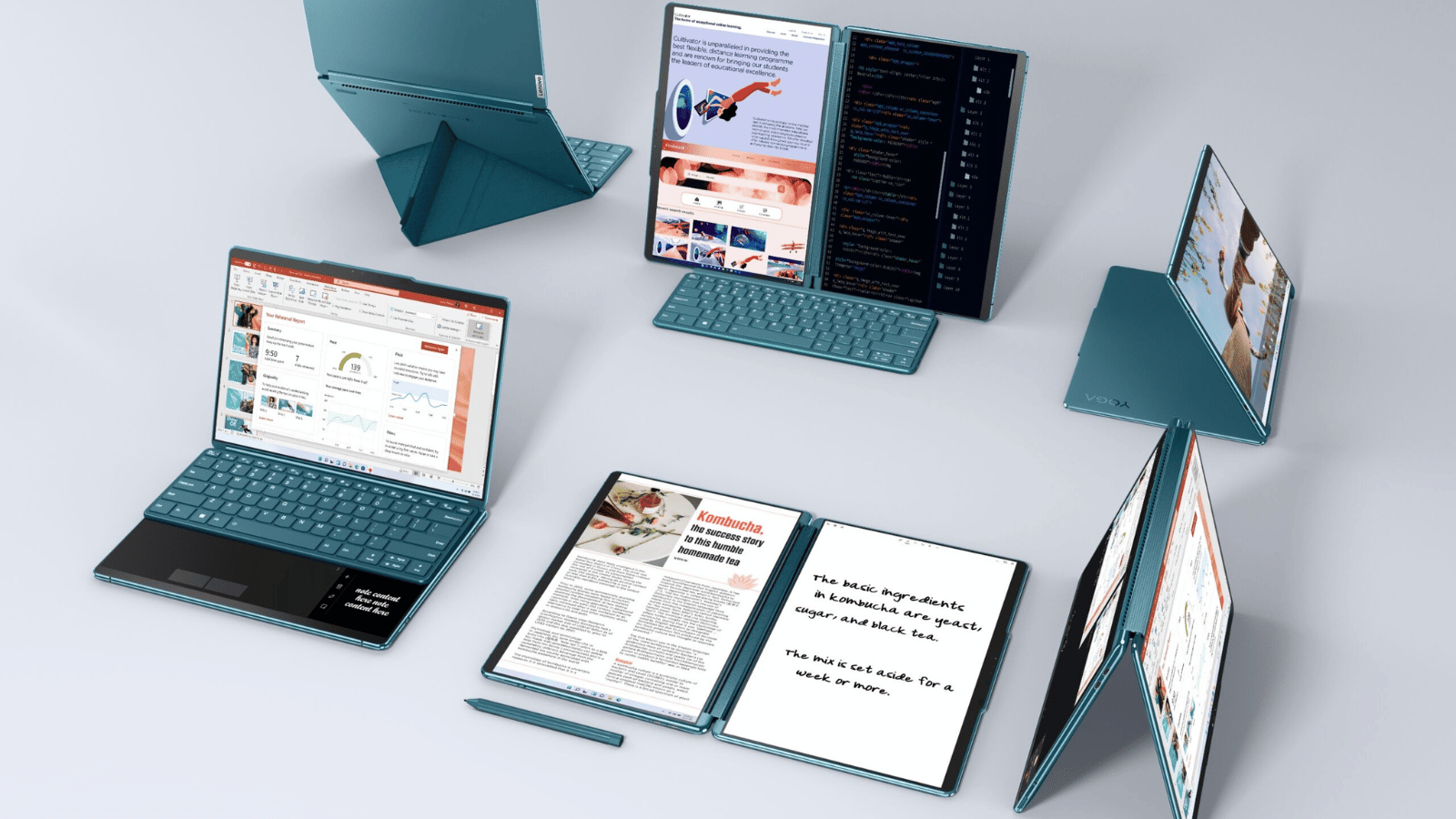
As with everything these days, companies want folding technology to be a thing whether you like it or not. Even laptops are getting in on the hype – with Asus’ Zenbook 17 Fold being a prime example. This year, Lenovo debuted its Yoga Book 9i, a strange take on the foldable hype. It’s weird. Really weird.
Lenovo calls the Yoga Book the “first full-size dual screen OLED laptop” because that’s what it is. A dual-screen setup that does away with all of that screen-folding. The Yoga Book folds ‘normally’ using a visible hinge down the centre. It’s just packing an extra screen in the arrangement. Both screens are 13.3in OLED panels capable of hitting 60Hz. Each has 400 nits of brightness to play with too. There’s no keyboard either. That’s what the second screen is for, though you can add a peripheral if you like the feel of proper keys under your fingers.
Inside is an i7 U-series CPU, 16GB of LPDDR5X RAM and the choice of either 512GB or 1TB SSD storage. Coupled with the 80Wh battery, you’re looking at a $2,100 price tag (around R36,000). It’s expected to release in June this year.
Wait, Sony made a car?
Well, no. Honda made the car. That’s what they do. But still, the team up between Sony and Honda is an odd one. The prototype, known as AFEELA, was announced at CES, with an expected release date of 2026 (in North America).
AFEELA is an EV – built under the new brand ‘Sony Honda Mobility’ (SHM). The CEO of the SHM, Yasuhide Mizuno, said that Sony’s part would be helping kit the cars out with AI, VR(?), AR and entertainment. What this all means, exactly, is still unknown.
The car will be smothered in sensors of the camera, radar, ultrasonic and lidar type. That’ll help the car drive on its own, apparently. They’ll be hidden under the car’s crazy, ultra-futuristic body. The design… probably won’t be everybody’s cup of tea.
Exact pricing hasn’t been announced, though SHM said it would be similarly priced to other premium car makers – BMW, Mercedes-Benz, those folks. The initial price won’t be all you’re paying for though, with Sony confirming that there would indeed be subscription services. As long as it keeps our behinds warm without needing an extra fee, it’s all good.
Source: The Verge
Speaking of futuristic cars
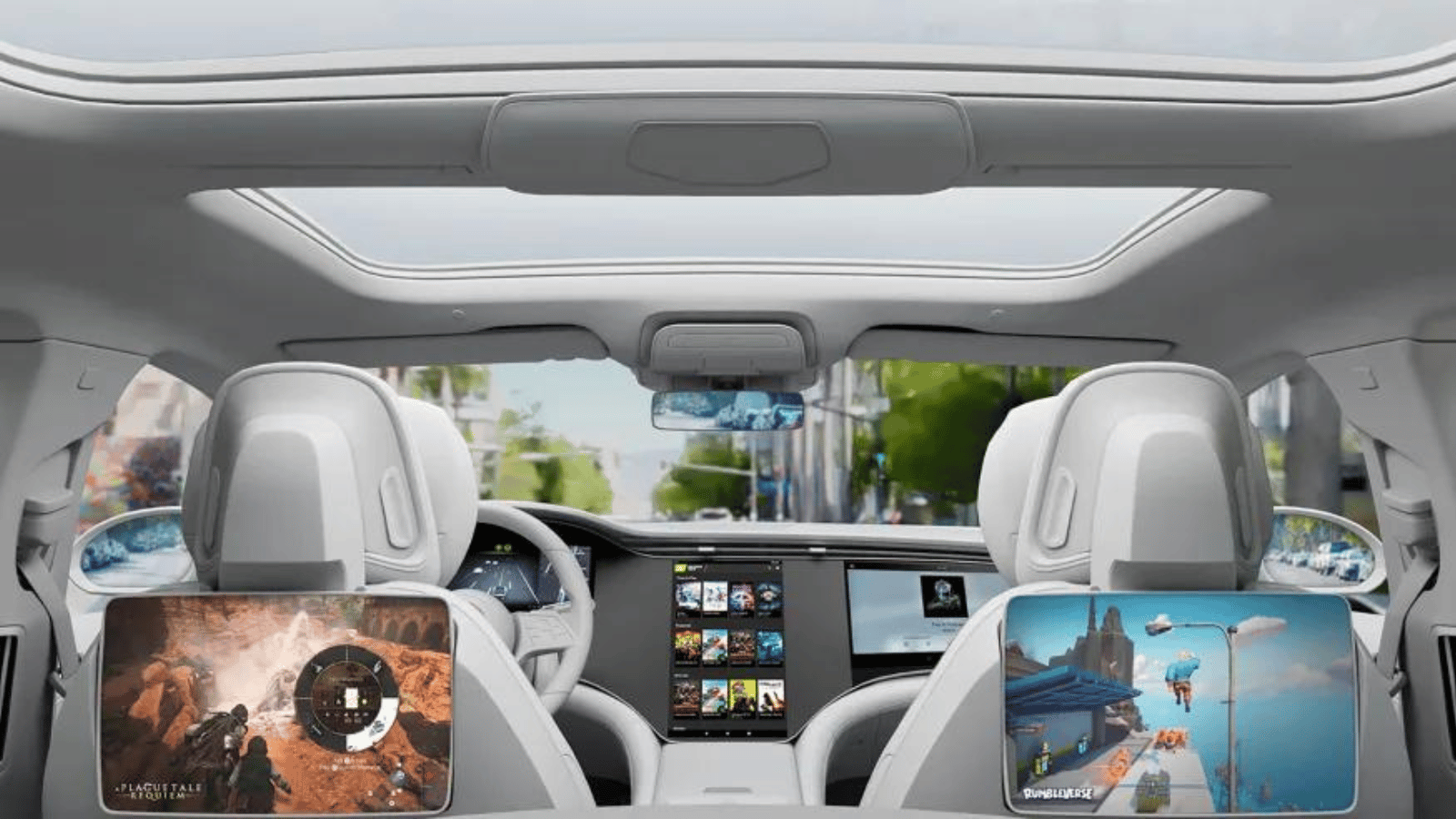
Playing video games in cars will no longer be limited to the Tesla elite. Unless you’re counting Clash of Clans from the passenger seat. We don’t. What we do count as gaming in cars is the announcement of the GeForce Now cloud gaming service coming to the moving screen soon.
Upon rollout, games like Cyberpunk 2077 will be available to play while the car is parked, or from the backseat screens. Support has already been established from Hyundai, Polestar and BYD in China. It’ll run on Android or web-based car computer systems, though we’re sure if the service becomes popular enough, it could come to cars with Apple CarPlay too.
Cost-wise, the most expensive tier will set you back around $200/year, though a free tier is available that gives access to games like Destiny 2. There’s no release date for GeForce Now in cars, though we can safely assume it’ll hit in 2023.
Source: Engadget
You’ve heard of ThinkPad. Now…
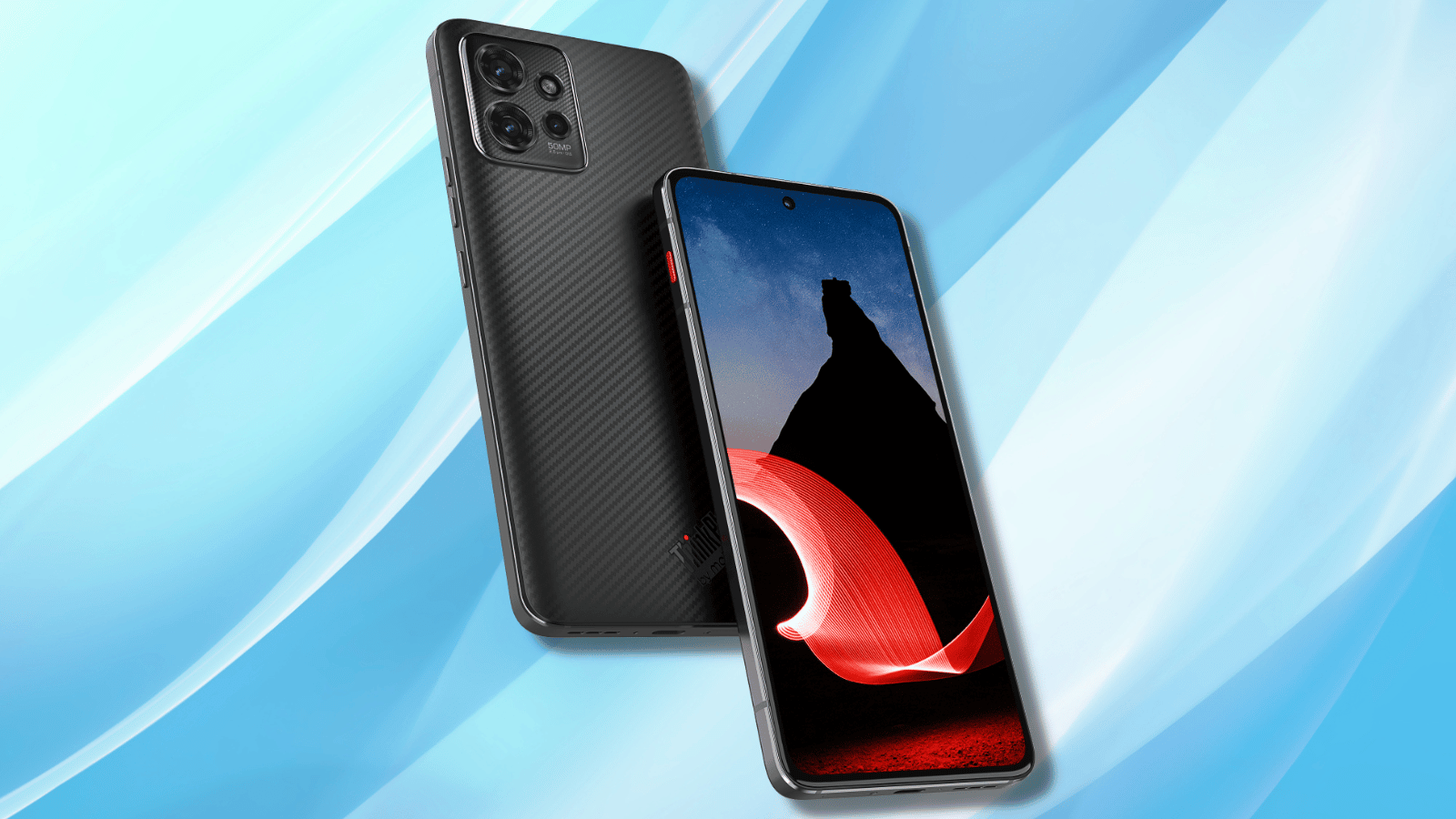
Enter the ThinkPhone by Motorola (what a mouthful). This is a phone that’ll appeal to people that loved the drab look of the ThinkPad laptop line.
The ThinkPhone by Motorola (we’re just going to call it the ThinkPhone from here), consists of a 6.6in OLED 2400x1080p display that supports HDR10+. It’ll reach 144Hz if that’s important to any mobile gamers (again, Clash of Clans still doesn’t count). Inside, there’s a Snapdragon 8+ Gen 1 chipset (whoops) that pairs up with 8/12GB of RAM and the choice of 128/256/512GB of storage.
The battery isn’t anything special. There’s a 5,000mAh battery that supports 68W wired charging and 15W wireless charging. The 50MP f/1.8 camera will do enough to keep you happy though you’d probably be better off with something a little more high-end if photography is a necessity. Up front, you’ll find a 32MP camera looking at you.
Unfortunately, there’s almost no chance that’ll reach Africa once it launches. Pricing hasn’t been announced, but if you absolutely have to have the ThinkPhone when released, you’ll be stuck with a hefty import fee.
Oh, yes. There’s only one colour – Carbon Black. At least Batman will be happy.
Source: GSMArena
Weird flex, but okay
As we mentioned earlier, companies are looking for any way to get in on the folding screen hype. Samsung is no different. There are plenty of foldables you can purchase from the South Korean brand. This year at CES it did things a little differently. Instead of a screen that bends, they brought us a screen that stretches.
Of course, the Flex Hybrid OLED doesn’t only stretch its screen. It still folds. We guess they couldn’t help themselves. One side of the phone folds, while the other stretches. That’s where the ‘hybrid’ part comes in. It starts as a measly 4.2in screen but folds out to become a 10.5in display. Stretch out the other end, and you’re left with a 12.4in screen that’s perfect for consuming content on the go.
There’s been no mention of when we’ll see these in the hands of regular folk. Or how much it’ll set the regular folk back. But we will. Eventually. Just don’t take too long, Samsung – every other company in the world has just started work on their own stretching folding screens.

